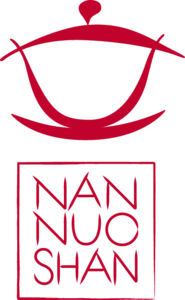Tea tasting in Italy
March 6, 2015
Friday evening. I have been carrying two large cases jam-packed with tea all the way down to Italy. On the train I enjoyed the voice of the passengers sitting next to me. I haven’t been in Italy for a while and noticing the nuances of my mother tongue, the dialectal inflections and simply understanding every word with no effort puts me in a good mood.
In Milan a warm, late winter sun welcomes me. It’s rush hour in the Italian metropolis. Stations and subways are full of people, but I don’t stress. I slowly commute from train, to subway and bus on my way to the location of today’s tasting. Cinzia, our host, arrives just after me. Together we prepare the room, set up the table and soon the doorbell rings; the first guests arrived.


We have invited only a restricted circle of fellow customers for an evening dedicated to green and high-fire oolong teas.
Our stock of green tea is depleting and the one from the 2015 spring harvest will not be available before early summer. Our customers don't miss the chance to refill their cupboards. We taste together Taiping Houkui and Ganlu, a Sichuan’s green tea fresh and sweet like dew.
We proceed with Huang Ya, a rare and traditional yellow tea from Sichuan, brisk and tasty. Before moving to oolong tea we delight ourselves with a Shou Mei 2000, a Fuding white tea aged 15 years long!
Hour after hour, we keep on drinking tea without rest. On the table also cookies and dry fruits from China.
Shui Xian is our first oolong, a roasted and mineral Yan Cha. Loris, who drinks only white and green teas, would like to do a first step into the oolong world. He decide himself for Hua Xiang Rougui, an affordable Yan Cha remarkably floral: Hua Xiang means “flower fragrance” in Mandarin.




It is already late in the night but we are eager to taste more tea. So what about a high-mountain Taiwanese oolong? Avoiding compromises, I brew Li Shan, a tea growing 2200 meters above see level in one of the most renowned Taiwan tea mountains. It’s rich, fresh, complex and recall our mind to a spring flowery meadow. Just the thought of it makes my mouth watering! Read more about this outstanding oolong here.
We conclude the evening with Lan Shi Hei Ma, a pure and smooth pu’er from old tea treas. An assertive Pu’er reminiscent of dry berries.
It’s two o’clock in the morning and we have being drinking tea for six hours! The last guests leave the house and I rush to bed. Tomorrow I will travel to Turin to hold an introductory tea workshop.
March, 7 2015
After lunch I meet Cristina and Giuseppe from L’ordine dell’Universo, an association promoting macrobiotic alimentazione. L’ordine dell’Universo already hosted a successful tea event in Milan and kindly offered to host a second event in their Turin’s site. We dispose tables and chairs for the thirty guests, set up the gongfu cha table and the beamer before the first guests arrive.


Welcoming aperitif with Bi Luo Chun, a fruity green tea from the Dongting Mountain, and macrobiotics pastries prepared by Cristina.
Our classical introductory workshop consists of a talk about the tea plant, its origin and history followed by an overview of the six tea classes: white, green, yellow, oolong, black and post-fermented. For each class, we describe the production and preparation and present tales and photos from our journeys in China. From time to time the talk is interrupted to taste some tea together. The guests can thus experience gongfu cha -the traditional Chinese tea preparation- and appreciate the nuances and variety of Chinese tea. The bravest are also invited to come up to the front and try handling gaiwan, Yixing teapot and other Chinese teaware.
We compare Long Jing and Bi Luo Chun, a nutty and a fruity green teas. We move onward to Milan Xiang, meaning Honey Orchid fragrance. This is a flowery and complex oolong belonging to the Phoenix Single Bush subcategory. Original Phoenix tea comes from the Wudong Mountain in the southern Guangdong province and is extremely sought after in China. This tea is a success and we sell all the boxes we brought to the workshop.
After oolong it is the time for black tea. Tanyang Gongfu, a traditional Fujian black tea, and Qi Hong, a smoky-fruity tea hand roasted in the wok.
During the event we introduce our new collection of nannuoshan’s teaware: cups, gaiwan and tea taster mugs with the nannuoshan logo. The logs were fired in a kiln in Jingdezhen, the porcelain’s capital.




As usual, a small group remains in the room after the end of the workshop and gathers at the gongfu cha table. We drink together a Shou Pu’er from year 2005. The three ladies at the table like so much this rich and earthy loose Pu’er that decide to buy and share the only bag that I brought to Italy.


Tired and happy, I pack once again everything in the suitcases and after a relaxing night I go back to Milan and from there back home. The sun is still shining up in a blue sky. March is a spring month here in Italy but snow and cold are still waiting for me at home.
Written by Gabriele

